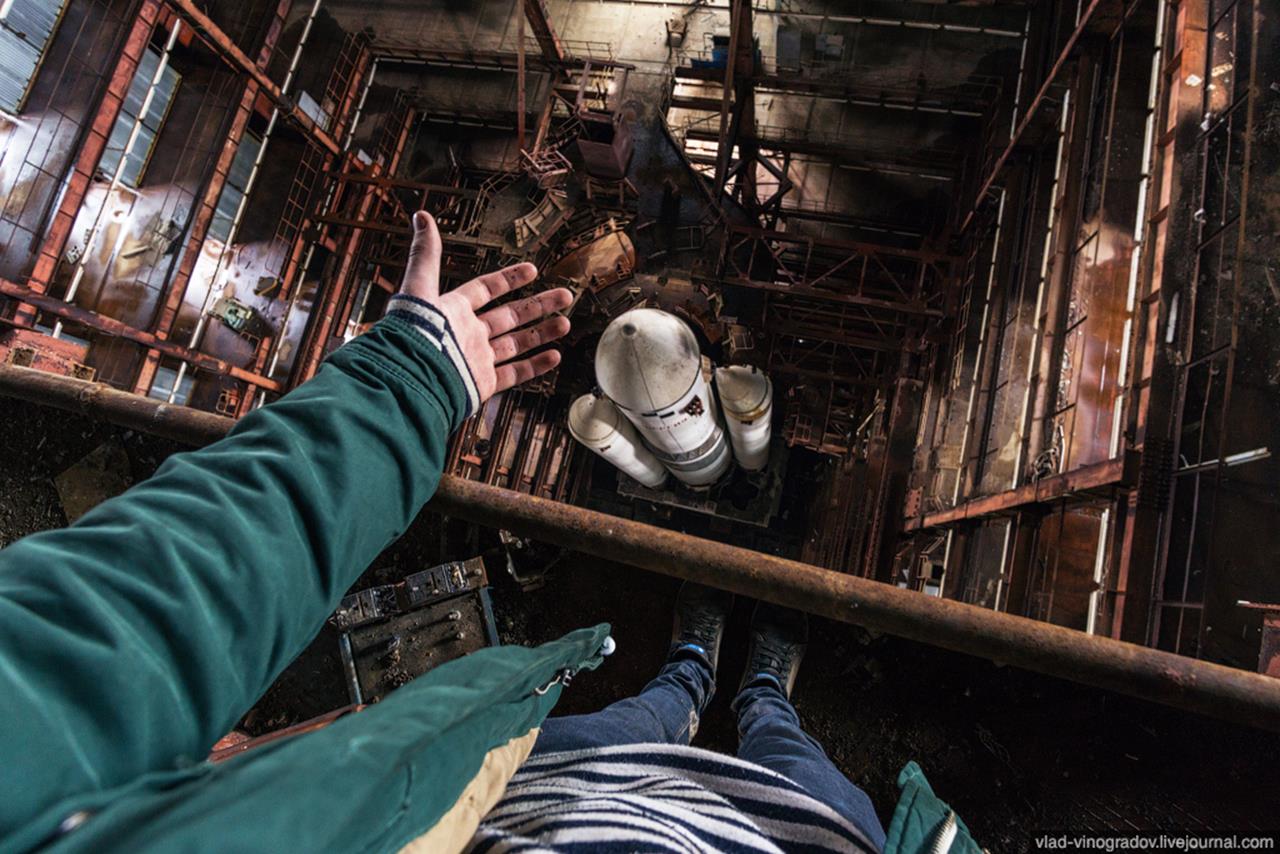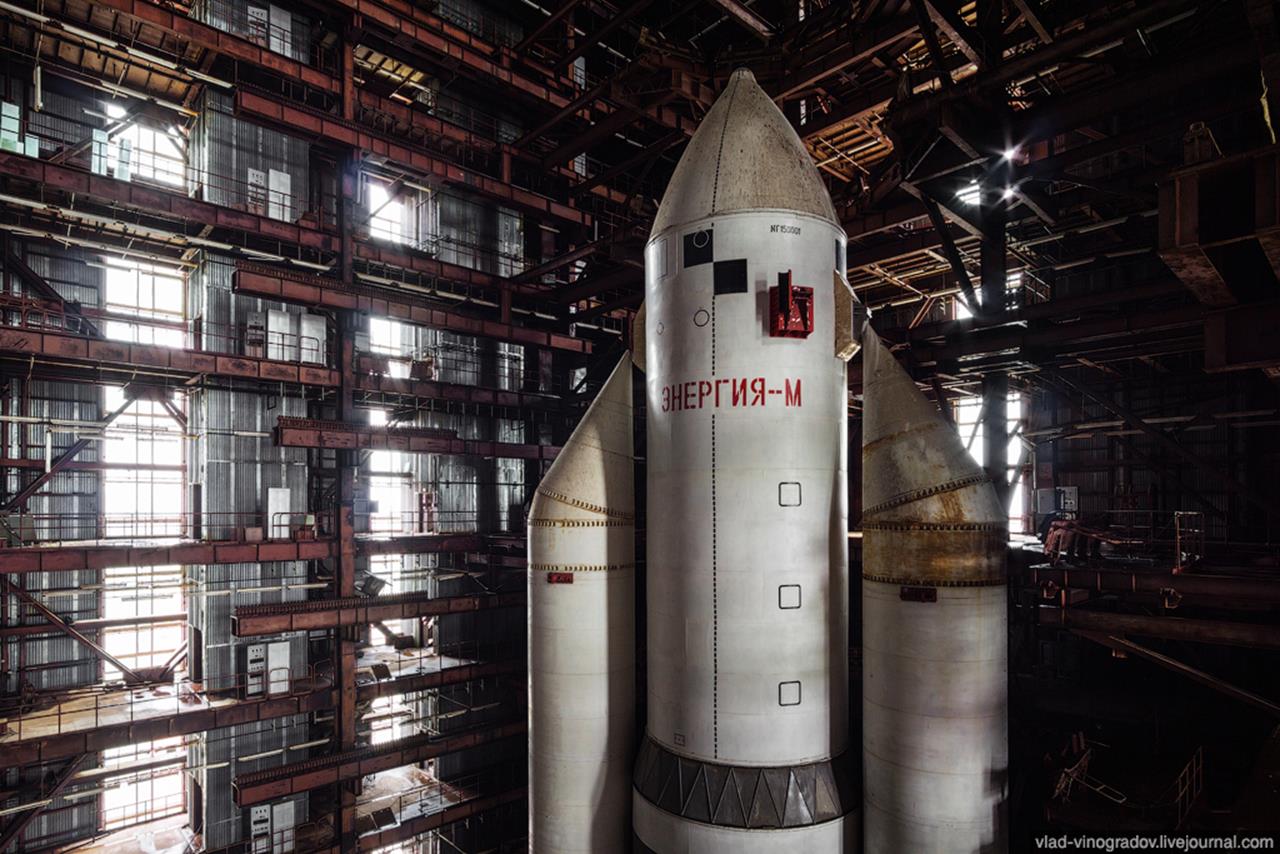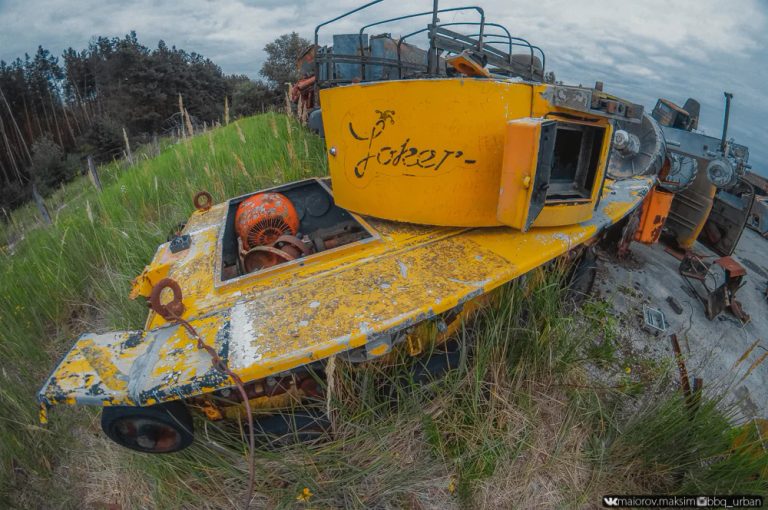Abandoned Energia-M booster rocket
This post is about the abandoned dynamic test system at the site 112 of the Baikonur Cosmodrome.

Just like in the previous post about the assembly and fueling site (MZK), I’ll start with a technical description of the performance capabilities of this “product” and a little bit of historical information.
The Energia-M booster rocket is the main force capable of making a small group of people rise above the 2000 km mark. It is classified as a super-heavy booster, weighing about 1050 metric tons.
The booster allows to put loads of 34 and 37 metric tons (including spaceships such as Buran) into near-earth and geostationary orbits accordingly.
Moreover, after the ship is placed into orbit, it is possible to conduct a subsequent launch to lunar and interplanetary orbits using the last stage of the booster.

The famous Buran launch was carried out by an Energia booster that was capable of placing a load of 100 metric tons into orbit.
Energia-M is its little sister, one of the several modifications together with the Energia-2 and Vulcan boosters. The last two never made it past project drafts.

The dynamic test system (SDI) allowed to conduct vibration tests and endurance tests, which means testing the boosters and their mock-ups at loads comparable with those occurring during launches.

The product has been located in the SDI building since December 27th, 1991. Almost 25 years have passed since the mock-up was “fitted” at the multi-purpose launch site and then transported to its confinement site.
After all these years, the building is almost completely empty, anything that wasn’t screwed on (and even some of the things that were) had been taken away, or, more bluntly, stolen.
Only the framework remains of the vibration test system, and it is possible to use it for climbing to the top. There are also a few utility rooms and an office building at the side.

The mock-up of the booster is quite large – the center section is 50 meters (164 ft) tall. The building itself is even bigger: it rises above the Kazakh open spaces to a height of 100 m (328 ft) and is the tallest building in the whole Cosmodrome.
The nose cone is 7,7 m (25 ft) in diameter!

This is the bridge crane designed for moving the booster inside the building and a hardly visible person in the middle.

The enormous size of the building leaves a lasting impression.



The exit to the roof is reachable by a side staircase located outside the building. The floor plan of the building is quite simple, but it is still easy to miss this loophole at the first try.

At the background of this photo it is possible to see the assembly and testing site, also known as the MIK. When its roof collapsed, it resulted not only in the loss of the only Buran shuttle that had ever been in space, but also the deaths of a few staff.
Parts of rockets were delivered into the MIK for the final assembly. At the gates there are transportation and installation units, colloquially referred to as “grasshoppers”.
They were used for transportation of the finished booster rockets and then installed them horizontally at the vibration bed and the launch pad. Unfortunately, since the time of my trip was limited, I didn’t get a chance to come closer to them.

From the roof you can enjoy the view of the endless fields of Kazakhstan. The even steppe landscapes stretch beyond the horizon.
Any structures are a rare sight. For example, it is possible to spot the launch pad where the Buran took off.

The surrounding grounds of the assembly and fueling site. Its building is also remarkable for its size. It is 130 m (427 ft) long and 60 m (197 ft) tall.

The gates of the site are mounted on a small railway that allows them to move sideways when the booster rocket is being carried inside.
This beam is one of the upper guide tracks. Just like everything else, it is also quite gigantic.

Here is the mock-up of the booster rocket standing tall and proud, from the base plate and vibration generators up to the crane operator’s cabin near the roof.



Various control panels, or, rather, what’s left of them.


This is what the vibration test site looks like from the outside.

Our footprints will remain on dusty paths of remote planets. (Translator’s note: this is a line from a popular Soviet song).

Images @ Vlad Vinogradov






